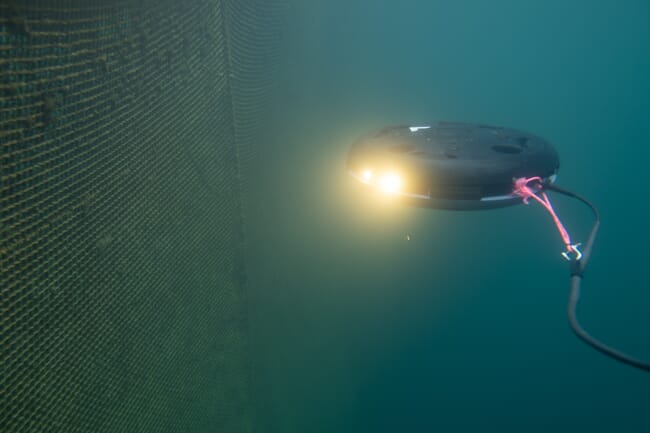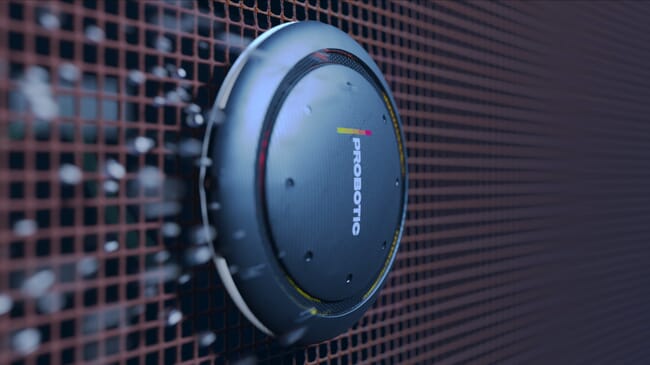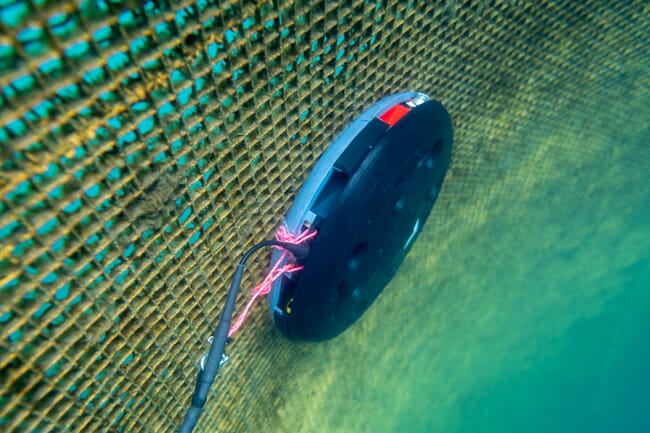
The underwater drone automates routine cleaning tasks, decreasing operational costs and climate emissions © Probotic
Probotic revealed its initial findings from pilot testing on its Probot drone. According to a news release from the company, the underwater drone automates routine cleaning tasks, one of aquaculture’s recurring pain points. Automating this task results in cleaner food production, improved animal welfare, decreased operational costs and reduced climate emissions.
The drone was tested at Ballangen Sjofarm's sites this summer. After a month of testing, the drone’s mechanical aspects have been validated. The next phase of testing will focus on optimising the drone’s steering algorithm and detection algorithm. The prototype currently in testing is Probotic's seventh series of prototypes and is the last prototype series before the production model launches.

The Probot drone uses a preventive method that cleans the nets and prevents biofilm creation © Probotic
Significant findings after the first month of testing Probot prototype P.7*:
- Jet-propulsion system works in real conditions and enables seaweed to flush through the water jet.
- Probot can operate in 90cm/sec of water current when in cleaning mode.
- Probot can operate 180cm/sec of water current when in inspecting mode.
- The submersible docking station holds the drone secured in place and has gone through one storm with measured one meter/second of water current.
- The hydrodynamics of the drone allows for smooth movement in the water.
- Live video and sensor data from drones are now available.
- Beta version of detection algorithm already finds holes.
- No dealbreakers after a month of testing.
*This is today's development status; all stated findings are expected to be improved by further development.
"The idea for this technology came to me after working several years inspecting and cleaning fish pen nets the traditional way," said Mikkel Pedersen, CEO and founder of Probotic. "I knew there could be a more efficient way to get the job done, so I got to work on my vision of building a robot that would automate these processes, saving aquaculture companies hours of labour and operational costs."
The fish farming industry's current method of cleaning fish pen nets is reactive, meaning they clean when the build-up of algae growth and debris is so severe that you must clean the nets. This reactive approach negatively affects the environment, fish health and operators. Traditional cleaning is also costly and resource intensive. The traditional systems are still partially manually operated and use high-pressure water pumps to remove algae and debris. One key problem with this approach is that biofilms are flushed directly into the net – causing an unsatisfactory environment for the fish.
The Probot underwater drone uses a preventive method that's a more natural and gentle way to clean the nets and hinders biofilm creation on the fish nets entirely. The drones clean constantly – the only times they are paused is during batter charging or additional inspection by the operator.

Probotic plans to rent the drones out to aquaculture operators © Probotic
"The Probot system will be rented out as a service, which ensures our sustainability goals and gives us control over the product lifecycle. It also means we are responsible for ensuring the product will function as expected throughout its life, allowing customers to focus on its other high-value operations," Pedersen added.




